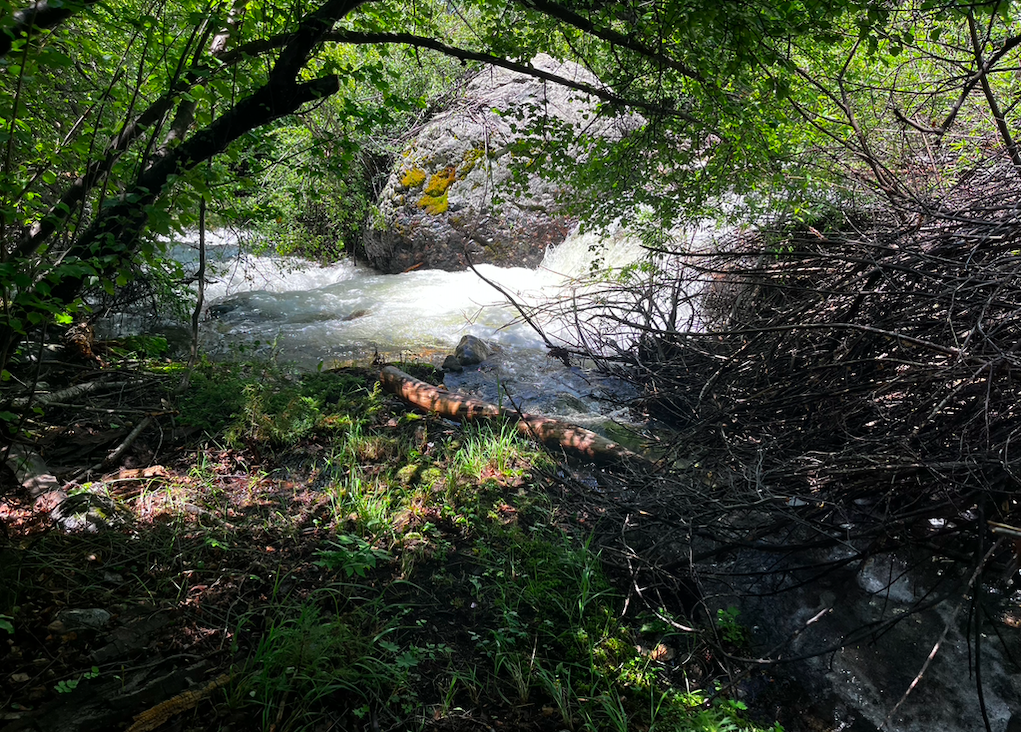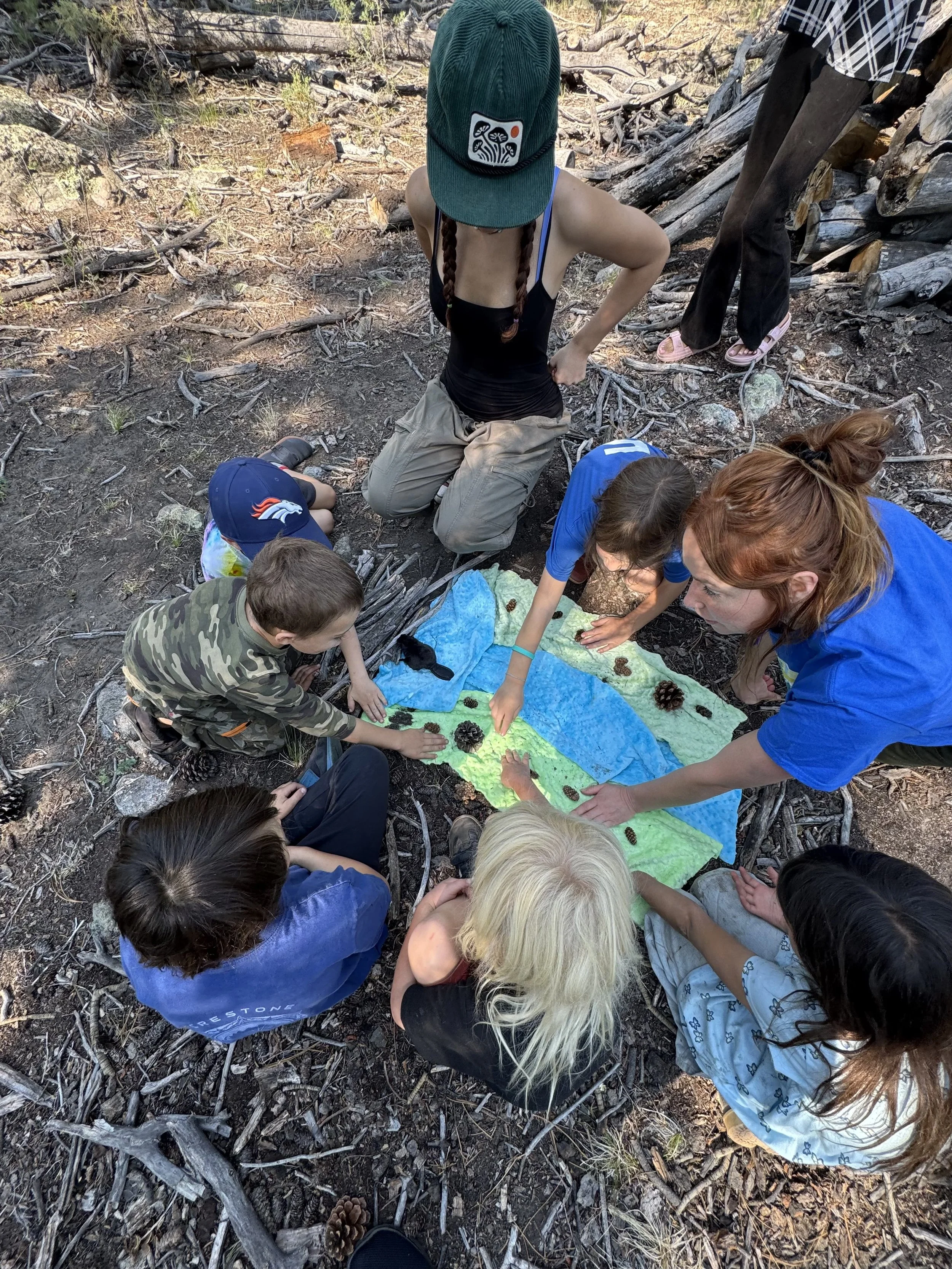
Current Projects
We are currently partnering with the Rio Grande National Forest Service to restore beaver habitat at Wilcox Gulch, Willow Park and Copper Gulch. So far in 2025 we have installed over 40 Low Tech Process Based Restoration dams and are continuing to monitor hydration levels through the seasons. We have also installed 4-5 mycelium nurseries.
We are partnering with US Fish and Wildlife to implement Beaver Dam Analogue’s and prepare several sites for Beaver relocation in 2026 along the lower reaches of Cottonwood Creek. SO far we have 2 potential relocation sites that have been planted with hundreds of willow starts and had BDA’s installed.
We are also working with Colorado College and Way of Nature to implement Holistic Land Management practices on their land. So far in 2025 we have balanced the elements by reducing and burning hazardous fuel piles, fortifying mycelial networks, and slowing and spreading waterways.
We continue to survey past, present and potential future Beaver Habitat along several watershed’s in the Sangre de Christo’s as part of a larger Forest Service Survey.
We have been enjoying our partnership with Ensign Dojo’s Cottonwood Restoration school program to provide education for local students regarding local riparian zones and stewardship practices!
We continue to offer local pop up educational events regarding ecological restoration!

Completed May 2024, E3KFM used adaptive management and beneficial rearrangement to restore the ecological inheritance of Cottonwood Creek’s Riparian ecosystem. Centuries of anthropogenic (human-oriented) disturbance caused a build up of hazardous fuel and incised stream corridors. We partnered with fire and water to reduce this fuel by way of burning and building beaver dam analogs to slow the stream in order to sink and spread the water, increasing the range of the riparian zone.
Adaptive Management - an intentional approach to making decisions and adjustments in response to new information and changes in context
Beneficial Rearrangement - intentional disturbance of the landscape to bring ecosystem back into a healthier state
Ecological Inheritance - occurs when organisms inhabit a modified environment that a previous generation created
Regenerative Forestry - stewarding the forest to promote regeneration forestry protocols that focus on rebalancing the elements through working with keystone species, beneficial rearrangement, and adaptive management

Music and Mycelium – A Forest OfferingA Sonic Exchange with Cottonwood Creek
Participatory Workshop August 20, 9:30 am to 3 pm
Concert August 21, 2024 Set up at 10 am, concert begins at 4 pm
Join us in restoring the forest along Cottonwood Creek near Crestone with mycelium and sound on August 20 & 21.
The Sonic Apothecary in association with Shumei International Institute and E3 KFM will lead a workshop on how to use sound to restore a forest on August 20th. Each participant will learn how to set up a mycelial nursery and then bring it alive the next day during the concert offering, and learn how to feed native plants with Biodiversity Boost! Participants will also be guided on how to select various frequencies, sequences, and unique listening techniques to support the sonic restoration process.
As drum, didjeridoo, and bass sounds help activate a mycelium network, and the mycelium network helps to rehydrate and nourish the forest, we invite you to become a forest sound steward. Bring your instruments and join us as we pioneer using sound to restore the environment. Workshop participants will be invited to play in the concert offering on August 21.
The concert offering will begin with the Shumei Taiko drum group.
The Sonic Apothecary will be next and will invite the local trees and plants to join in the sonic offering. Workshop participants and musicians will then be invited for the finale, as we offer sounds up and down Cottonwood Creek in a call and response format, activating the numerous mycelial nurseries and trees that were fed with Biodiversity Boost!
Tickets are available at EventBrite: SONIC OFFERING AT COTTONWOOD CREEK. Sliding scale & volunteer positions available! No one turned away for lack of funds.
General Admission: $25
Workshop + Concert Participation: $45
Workshop + Concert Participation + Kit: $150
Kit includes: native Colorado oyster mushroom spawn, distilled wood chips, biodiversity boost, and a 528 hertz resonating bell.
Additional concert information, including parking and shuttle service, will be emailed upon ticket purchase.



